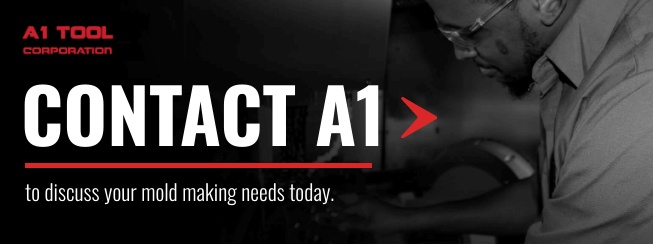Why is Sampling Important in the Injection Molding Process?
Sampling is a quality assurance step in many different production processes. For example, to maintain quality and consistency in the injection mold product process, sampling is a critical step.
Molds are often used for a minimum of a thousand parts, but often into the millions. Even the tiniest defect can create significant consequences. Also, the majority of projects last for many years. To ensure there are no defects over time, it’s necessary to inventory and store all tools for their usage duration. This includes parts from every run to ensure they are consistent with parts from the very first run.
Production begins with a sample run of typically 100 or so parts. These are sent to customers for final approval. This critical step mitigates risks before production moves into higher volume. If any quality issues or defects are discovered, they can be addressed right away.
To ensure consistency over time, the approved samples stay with the mold in storage, so that when a customer orders more parts for that same tool, the press operator has an approved sample to reference when dialing in molding parameters. Also stored with the sample is critical information, such as the mold number, order number, order quantity, material used, and other details to improve traceability of each order that passes through the production facility.
4 Common Stages in Mold Sampling
There are several stages of the injection mold sampling process, including the following four basic steps.
Stage 1 — Create the sample parts and send them to the quality control team. The team examines them and documents their measurements, cavity-to-cavity consistency, shot-to-shot consistency, run-to-run consistency, and overall quality.
In multicavity molds, every cavity must produce identical quality parts. The reasons they might not achieve that goal include uneven or insufficient venting, and cooling between cavities may not be identical.
The parts molded during every consecutive shot must be identical in quality. The reasons they might not include the machine is not delivering the melt consistently, and the process parameter settings are not robust.
The parts molded from run to run must be consistent. The reason they might not, include the molding machine is out of calibration and the molding parameters were not recorded and, therefore, cannot be reproduced.
Stage 2 — Any defects discovered are examined and recorded, along with recommendations for adjustments in the process or tool required to correct the defects. Additional critical data is also recorded, including melt temperature, tool temperature, coolant flow, fill time, cycle time, and pressure curves.
The melt temperature is typically 10°C to 20°C (50°F to 68°F ) above the melting temperature of the backbone polymer, which is the highest temperature polymer in the compound. If the temperature is set too low, poor flow characteristics, like flow lines could be evident.
Many plastic molding processes operate at relatively high temperatures, such as 80°C (76°F). If a mold is not insulated, heat loss due to air or the injection molding machine is a risk.
The design of the cooling system is also important in injection molding. This is because the molding of plastic products only cools to a certain rigidity level. Plastic products then release from the mold to avoid deformation due to external force.
Cycle time is the total time required to complete all the stages of the injection molding cycle, including filling the mold with polymer, pack time, cooling time, and mold open time.
The injection pressure is the cavity pressure that is measured near the gate. It is applied to fill the mold cavity. In the pressure curve, it is a characteristic kink between the mold filling and packing phases that can be determined by process data acquisition.
Stage 3 — Based on information gathered during quality control, necessary tool adjustments are made and new sample parts are made.
Stage 4 — The new sample parts are subjected to the same quality testing and more adjustments are made if necessary.
At A1 Tool, our injection mold sampling process includes production testing to examine any issues that could impact the moldability of a part. Our service includes working collaboratively with your production engineers, saving engineering time by modeling molds, adjusting geometry, sampling molds, and modifying molds. A1 also utilizes cutting edge software, such as RJG, to monitor, track, and record mold sampling statistics, for a better and consistent molding process.











